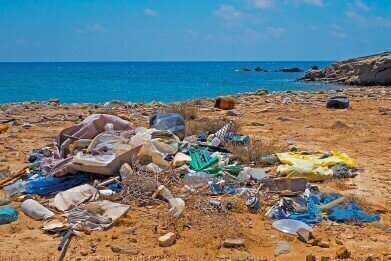Water/Wastewater
How Does Plastic in the Ocean Affect the Air?
Jun 13 2019
The dangerous problem of microplastic pollution is a well-documented one; with as many as 12 million tonnes of plastic entering the ocean every year, its impact on marine flora and fauna is monumental. It can damage coral and disrupt habitats, deface beaches and entangle marine animals or, worse still, become ingested by them and cause their premature deaths.
But while most people are well aware of the adverse effects of plastic pollution on life under the waves, its effect above them is less publicised. However, a new study suggests that underwater plastic could be killing off the organisms which create a significant part of the oxygen released into the air. Given that both humans and animals require that oxygen to survive, the findings are very concerning indeed.
Friendly bacteria
The word “bacteria” often immediately conjures up negative connotations - and with good reason. Bacteria can not only be responsible for infections and illnesses, certain strains can even contribute to global warming! However, there are also benign forms of the organism which actually perform tasks that are vital to the human race, including the unsung heroes known as Prochlorococcus.
As the most abundant organisms capable of photosynthesis on the planet, there are approximately three octillion (~1027) of the little blighters in our seas and oceans. Indeed, cumulatively these helpful bacteria are responsible for 10% of all oxygen found on planet Earth. As a result, their ongoing survival is key to our own.
Breaking new ground
In the first study of its kind, researchers from Macquarie University in Australia investigated the effect that plastic pollution might have on the vital functions of Prochlorococcus bacteria. To do so, they exposed two different strains of the bacteria (from different depths of the ocean) to two different groups of chemicals commonly leaked by high-density polyethylene (used to make single-use shopping bags) and PVC matting.
The results were not encouraging. Exposure to both kinds of chemical groups had adverse effects not just on the growth capabilities of both kinds of bacteria, but also their ability to photosynthesise. This, in turn, translates into a reduction in the amount of oxygen they are capable of producing, meaning any threat to their species could signify a threat to our own.
Taking the next step
While the initial results of the Macquarie University study were concerning, further work is needed to find out if the bacteria are similarly affected in real-world conditions. It’s an area of research that demands urgent attention because it is one that has flown relatively under the radar until now.
“Our data shows that plastic pollution may have widespread ecosystem impacts beyond the known effects on macro-organisms, such as seabirds and turtles,” explained Dr Sasha Tetu, lead author on the paper. “If we truly want to understand the full impact of plastic pollution in the marine environment and find ways to mitigate it, we need to consider its impact on key microbial groups, including photosynthetic microbes.”
Digital Edition
IET 34.2 March 2024
April 2024
Gas Detection - Biogas batch fermentation system for laboratory use with automatic gas analysis in real time Water/Wastewater - Upcycling sensors for sustainable nature management - Prist...
View all digital editions
Events
Apr 30 2024 Melbourne, Australia
Apr 30 2024 Birmingham, UK
May 03 2024 Seoul, South Korea
May 05 2024 Seville, Spain
May 06 2024 Minneapolis, MN, USA


















